Photography by Jason Stephens
Discover the rich history and fast-growing development of the aviation industry in Lakeland and the substantial growth experienced at Lakeland Linder International Airport through its partnerships with various companies and local higher-education institutions, opening up the skies to our community.
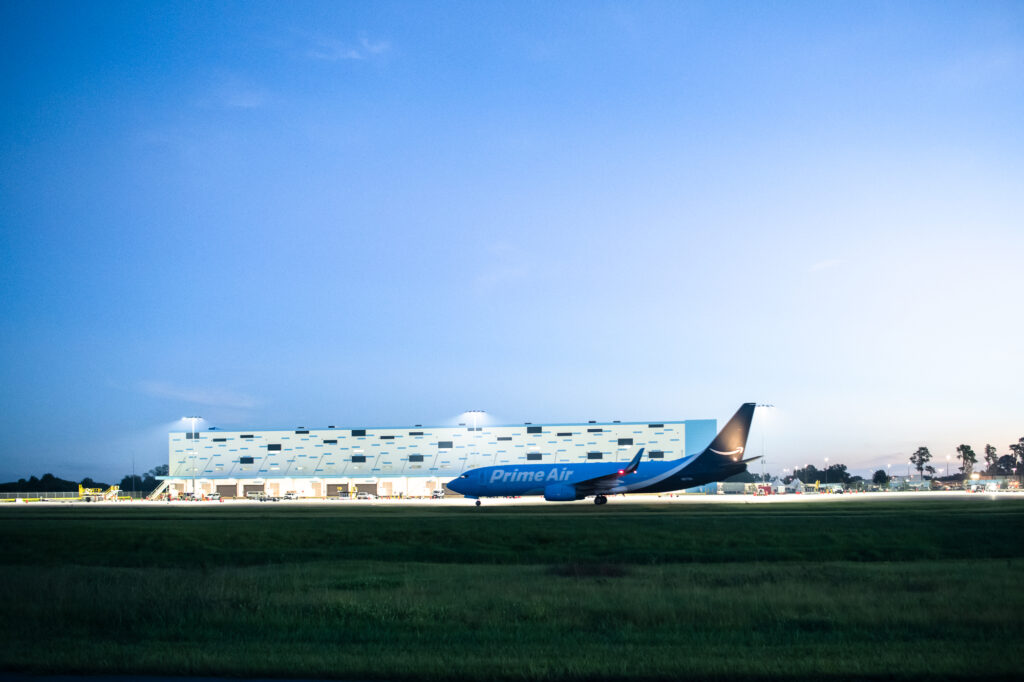
Amazon’s $100 million air cargo facility at Lakeland Linder International Airport.
As humans, we’ve always had this intrinsic interest and wonder about flying. We can look back to as early as 1903 when Orville and Wilbur Wright took their man-made aircraft and sustained controlled flight across the Outer Banks of North Carolina. Throughout history, we’ve been fascinated by the ability to defy gravity and take on a bird’s-eye view of the world — today these large “flying machines” lift us into the heavens, transporting us across our world in just a matter of hours. From that first flight over the Outer Banks to our first steps on the moon, passionate aviators have left us a legacy and vision of the future along with an ever-growing field that contributes around $1.6 trillion into our U.S. economy.
Predating World War II, Lakeland’s connection to the aviation industry runs deep, expanding its wings into the local and international world of aviation. In fact, Lakeland Linder Airport Director, Gene Conrad, says our city is quite “rich in aviation.”
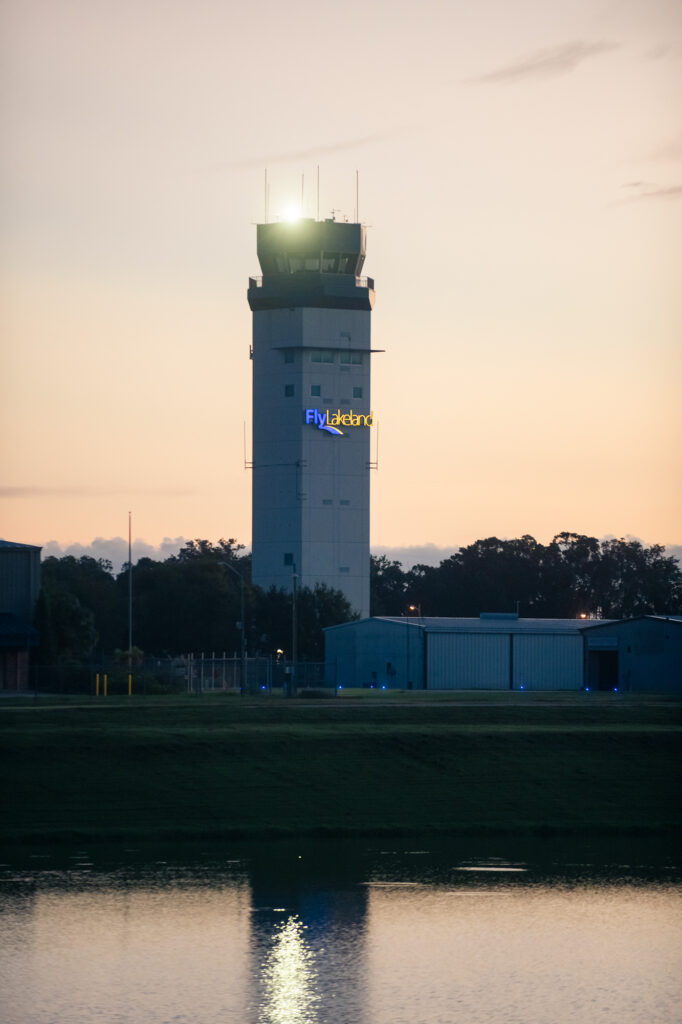 Back in the 1930s, Lodwick Field was the first-ever Lakeland airport — located where the area is now known as TigerTown, where the Detroit Tigers train every spring. As World War II erupted, Lodwick Field was pressed into service, becoming a primary training base for newly commissioned U.S. Army aviators. Meanwhile, south of the city, a second airport was under construction by the Army Air Corps to serve as an advance training base for medium bomber crews flying the Boeing B-26 Marauder, among other aircraft. As time passed and the war ended, the U.S. Government transferred control of this new airport to the City of Lakeland, which is now Lakeland Linder International Airport.
Back in the 1930s, Lodwick Field was the first-ever Lakeland airport — located where the area is now known as TigerTown, where the Detroit Tigers train every spring. As World War II erupted, Lodwick Field was pressed into service, becoming a primary training base for newly commissioned U.S. Army aviators. Meanwhile, south of the city, a second airport was under construction by the Army Air Corps to serve as an advance training base for medium bomber crews flying the Boeing B-26 Marauder, among other aircraft. As time passed and the war ended, the U.S. Government transferred control of this new airport to the City of Lakeland, which is now Lakeland Linder International Airport.
AVIATION BUSINESS
Within the last several years, aviation business has taken off in Lakeland! Since Amazon built its $100 million air cargo facility at Lakeland Linder International Airport, more than 800 workers have been hired, creating a huge job boom for Lakeland. According to Conrad, “In a year, just our airport alone will have an economic impact to the region exceeding $1 billion. E-commerce will always be a relevant industry, and we are so fortunate to have our partnership with Amazon.” He also notes that the airport has significantly impacted our state’s economy in a positive way since Amazon’s arrival and is expected to only continue increasing in the coming years.
Currently there are more than 60 different businesses located at the airport, including aircraft avionics shops, flight schools, aircraft painting and refurbishing facilities, and airframe and powerplant maintenance shops for all types of aircraft. “From the smallest airplane, such as a single-engine Cessna to a 737, we can do maintenance on them at the airport,” says Conrad.
The airport is also complete with consumer-facing businesses such as hotels and restaurants as well as a host of other “non-aviation” businesses, including logistics and engineering companies among others.
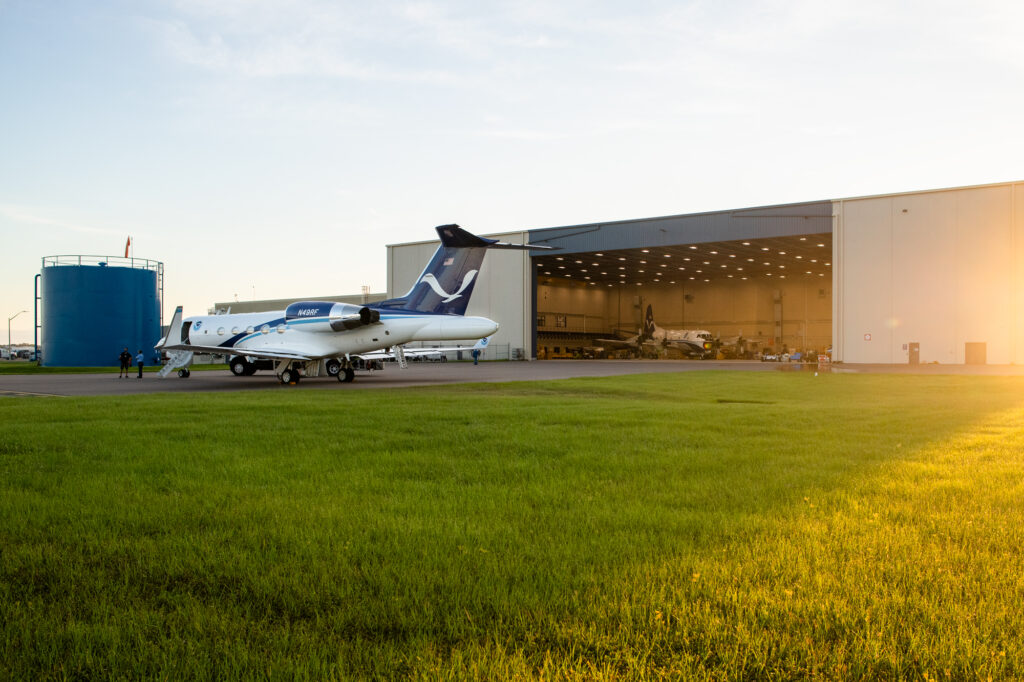
This year, the City of Lakeland will expand the existing AOC facility from 99,000 to 156,043 square feet, including additional office and hangar space, to accommodate new aircraft NOAA is acquiring to support hurricane, coastal mapping, emergency response, and other missions.
LOCAL & FEDERAL GOVERNMENT PARTNERSHIP
Lakeland Linder International Airport is also home to the National Oceanic and Atmospheric Administration Aircraft Operations Center (NOAA AOC) and their highly specialized research aircraft. Of particular interest are the Hurricane Hunters; these aircraft are specially equipped to fly over and through tropical systems, playing an integral role in hurricane forecasting. Data collected during hurricane flights by these high-flying meteorological stations help forecasters make accurate predictions of storm development and their future paths.
Meanwhile, NOAA’s light aircraft play a vital role in monitoring our environment. Operating nationwide, these aircraft support marine mammal population studies, shoreline change assessments, water resource and snow surveys, air chemistry studies, remote sensing projects, and emergency response. NOAA also operates unmanned aircraft systems used to observe marine life, seabirds, and their habitat.
NOAA Hurricane Hunters’ aircraft are specially equipped to play an integral role in hurricane forecasting.
In total, NOAA’s fleet of nine manned aircraft are all operated, managed, and maintained by NOAA AOC, a division of NOAA’s Office of Marine and Aviation Operations (OMAO), at Lakeland Linder International Airport, providing capable, mission-ready aircraft and professional crews to the scientific community.
[columns_row width=”third”][column]
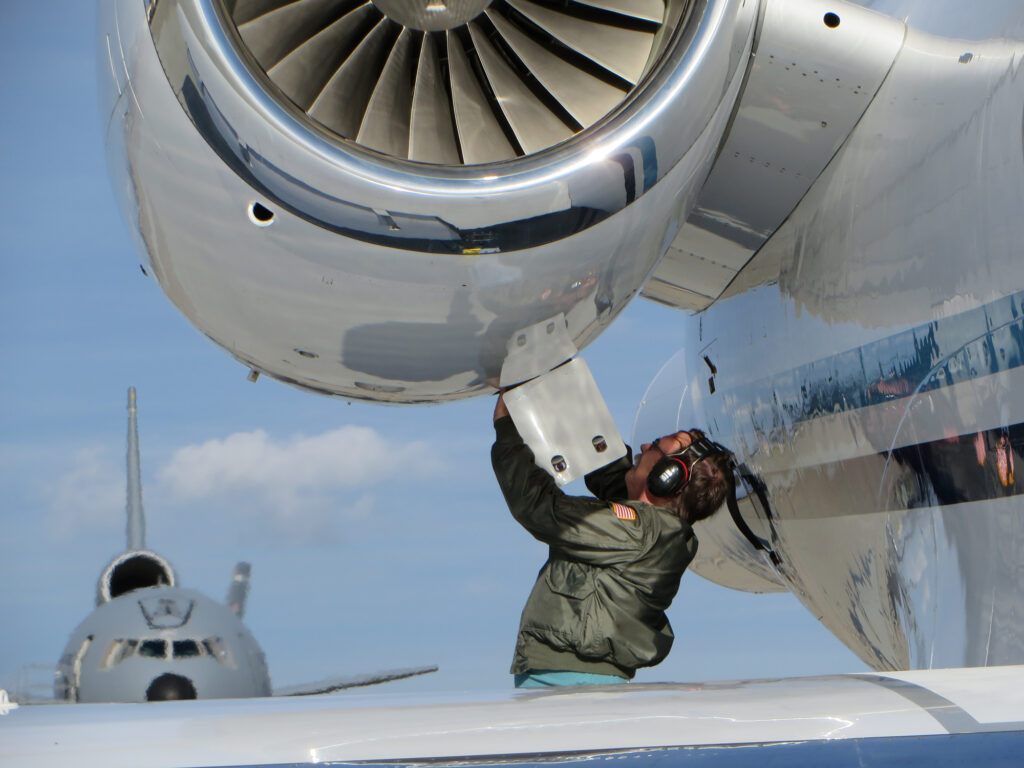
A maintainer services an engine on NOAA’s Gulfstream IV-SP jet NOAA Photo by Jack Parrish
[/column][column]

Lt Cmdr Rossi piloting NOAA WP-3D N43RF Miss Piggy on TS Laura mission // Photo by Lt Cmdr Doremus NOAA Corps
[/column][column]
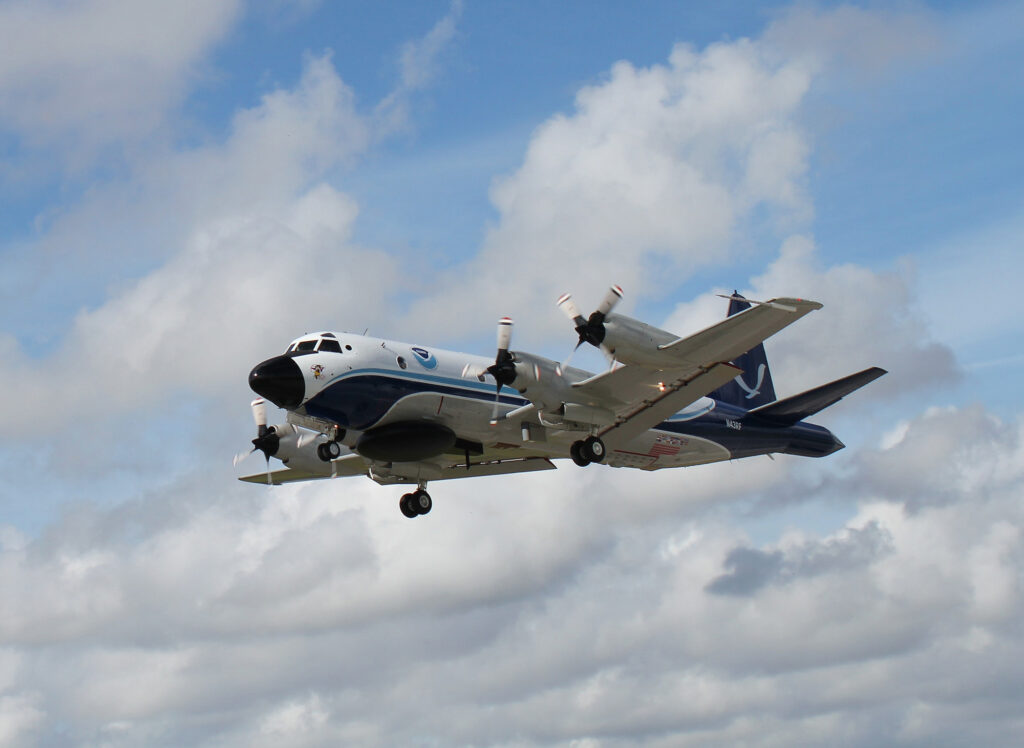
NOAA Lockheed WP-3D Orion N43RF taking off from Lakeland Linder International Airport // Photo by Jonathan Shannon
[/column][/columns_row]
In addition to NOAA, other government agencies at the airport include the Florida Fish and Wildlife Conservation Commission’s southwest regional offices and the Army National Guard.
The airport is also equipped with a U.S. Customs & Border Protection General Aviation Facility to meet the needs of international passengers and crew returning to the United States, officially giving the airport its “International” designation in 2017.
Sun ‘n Fun The Numbers
[alert type=blue ]200,000 guests from over 60 countries // over 9,000 AIRCRAFT MOVEMENTS // 510 Exhibitors [/alert]
AVIATION EDUCATION & THE COMMUNITY
Since its official opening in the 1940s as an army airfield where young aviators trained, Lakeland Linder International Airport has always been tied to the development of tomorrow’s aviators and continues to expand its reach through several significant partnerships.
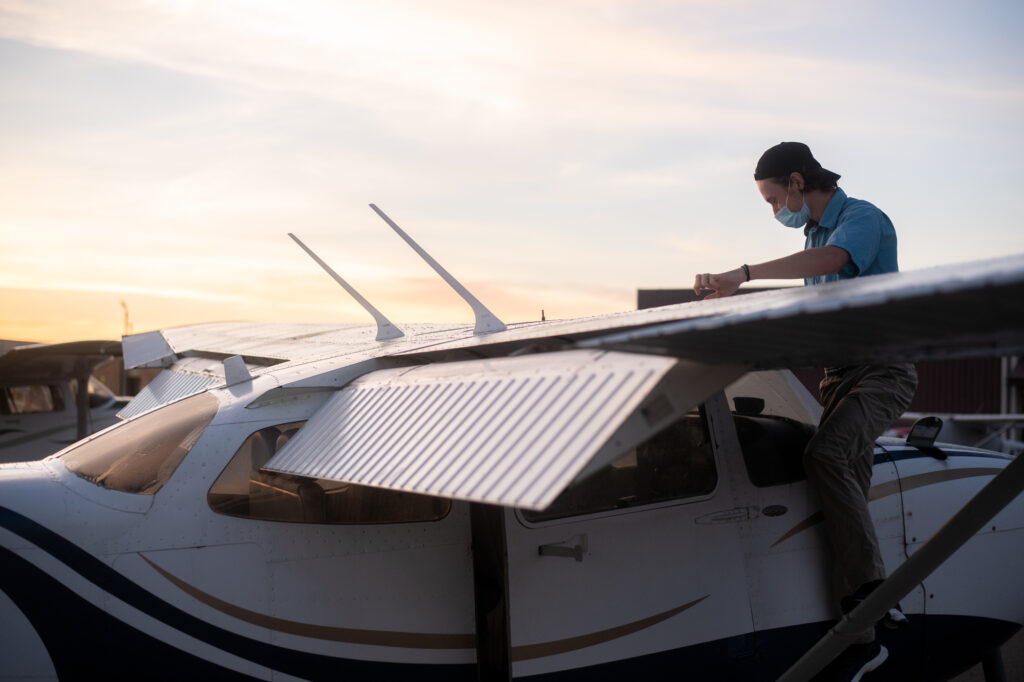 Currently partnered with several higher-education institutions — including Polk State College – Aerospace, which offers several four-year bachelor’s degrees in aviation disciplines and Southeastern University’s newly developed Aviation Program — primary flight training has boomed at the airport.
Currently partnered with several higher-education institutions — including Polk State College – Aerospace, which offers several four-year bachelor’s degrees in aviation disciplines and Southeastern University’s newly developed Aviation Program — primary flight training has boomed at the airport.
The catalyst for this growth could be pointed toward the Central Florida Aerospace Academy, a career academy through Polk County Public Schools. Located on the airport adjacent to the Florida Air Museum on the SUN ‘n FUN Expo Campus, this 9th- through 12th-grade academy along with its partners have helped grow interest and foster aviation education not only in Lakeland but throughout Polk County.
More than 300 students are currently enrolled at the academy which focuses its curriculum on aviation and the aerospace industry. Students have the opportunity to select from several tracks, including engineering, unmanned aircraft systems, avionics, aerospace technologies, and airframe and powerplant (maintenance).

The Flight Instructor, Chidwi Chintsanya-Malunga and student pilot, Paul Morrison, complete their preflight check before a morning lesson.
In addition, these students, along with any student attending a Polk County School, may apply for scholarships to obtain their private pilot license through the James C. Ray Foundation managed by the Aerospace Center for Excellence also located at the airport. As of April 2020, 102 students have received their private pilot certificate and over 160 students have soloed (piloted an aircraft by themselves), something noted as quite unique and a rare commodity.
Perhaps the best-known tenant of the airport, SUN ‘n FUN is also known as “Florida’s largest annual convention of any kind and the second-largest air show in the world.” The SUN ‘n FUN Aerospace Expo first began in 1975 as a small gathering of aviation enthusiasts and pilots. Since then, it has been catapulted throughout the aviation industry as a “must see” among passionate aviators and transforms the Lakeland Linder International Airport into the busiest in the world for one week.
However, SUN ‘n FUN’s impact stretches further than just one week each spring. Through its efforts and evolutions, SUN ‘n FUN continues to partner with other prominent aviation institutions spreading awareness and inspiring others to pursue a career in aviation through year-round educational outreach, including the Florida Air Museum, the Lakeland Aero Club, and the Aerospace Center for Excellence.
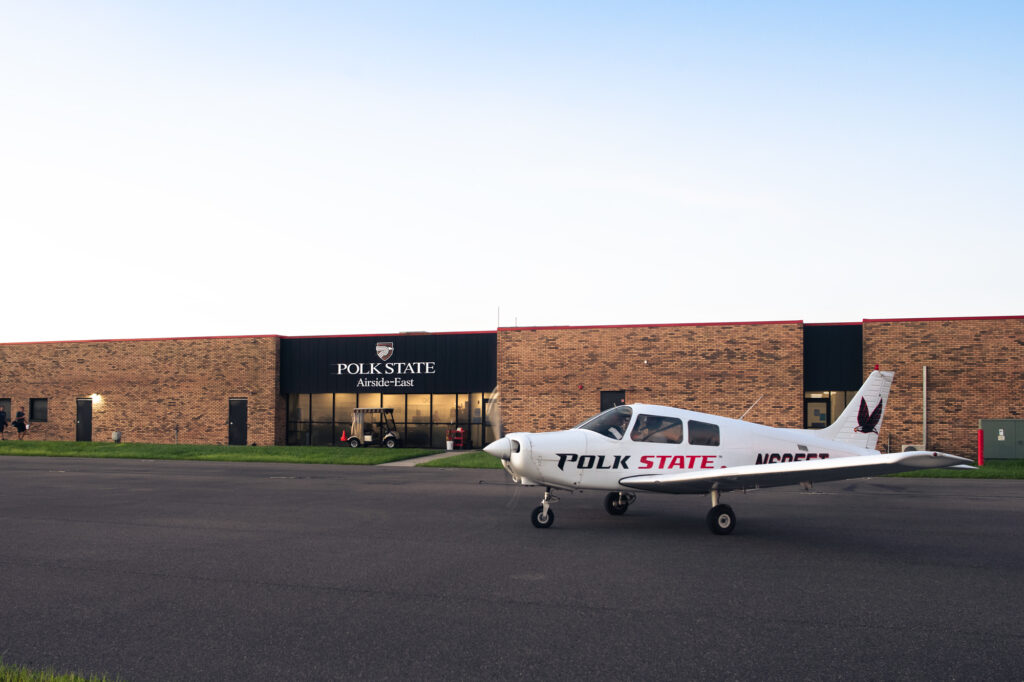
THE FUTURE
“Our goal is not to be the next Tampa or Orlando. Our goal is to be the next Lakeland. We want to see the aviation industry continue to [thrive] in Polk County,” shares Conrad. After working for Lakeland Linder International Airport for the last 10 years, he stands hopeful and optimistic with many who are involved with the further development of the aviation industry in Polk County. “We just finished up our master plan for the airport, mapping out what the airport will look like in the next 20 years [as we continue to grow],” he says.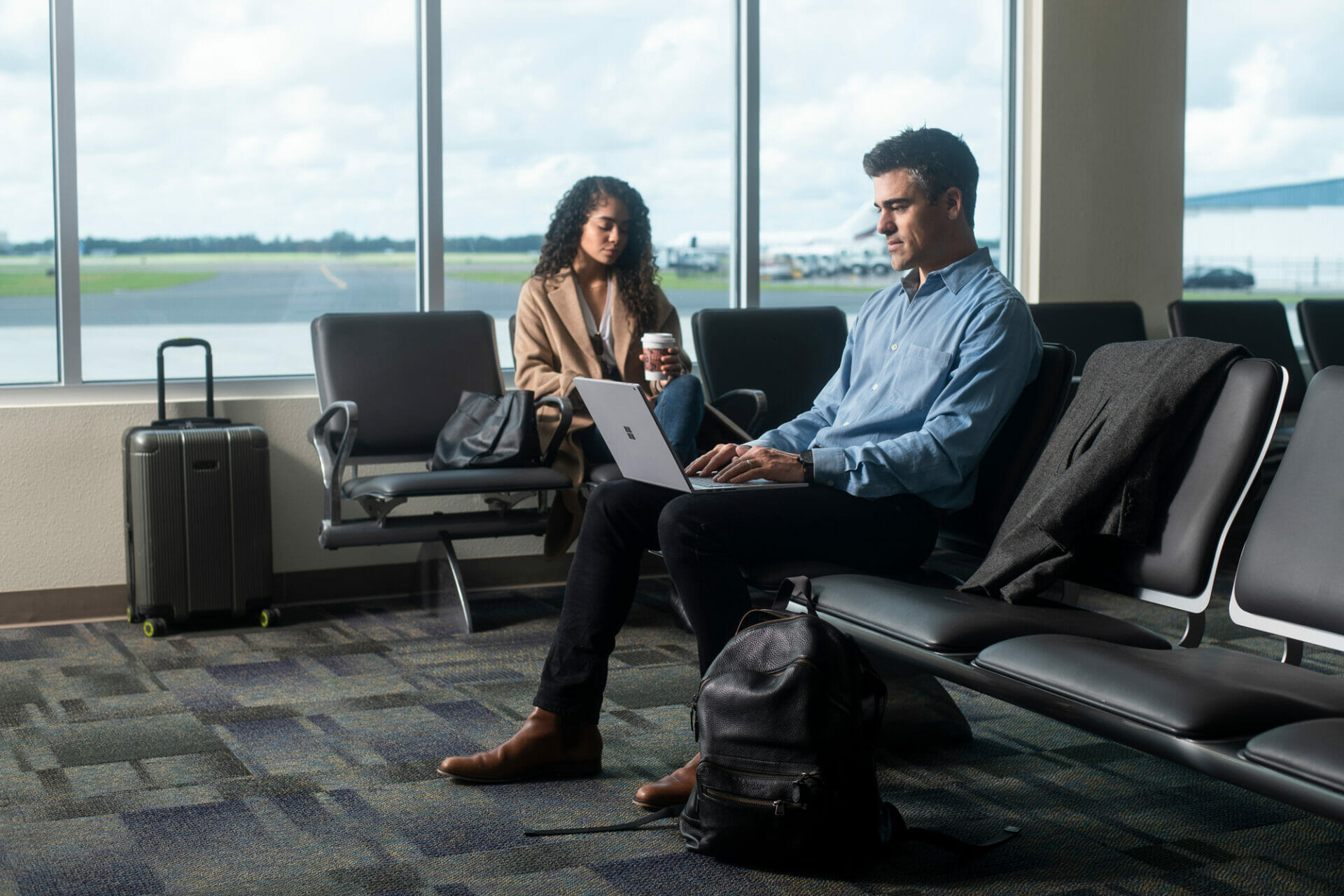
In the last few years, the aviation industry as a whole has experienced a shortage in pilots. With the unprecedented times presented by the COVID-19 pandemic, the shortage has increased substantially. However, many within the industry, such as Conrad, continue to push for innovative ways to recruit and inspire new pilots to take flight and step into their career quickly with proper training. As long as there is passion for flying, there are no limits to what this industry can accomplish and where it can take us in the coming years.
DEPARTURE CITY : LAL
Lakeland Linder International Airport is actively seeking commercial service targeting the Atlanta, Charlotte, and Washington, D.C. markets. Specific network service targets include American Airlines and SkyWest Airlines to Charlotte; United, Skywest, and Contour to Washington, D.C.; and Delta to Atlanta. Charlotte remains the airport’s top target with its 100 connecting cities linking Lakeland to the global market and the availability of new gates coming online shortly to accommodate additional growth.
 The Lakeland-Winter Haven metro area has almost 670,000 residents and has grown 12% since 2010. Similarly situated communities which currently have air service include Fort Myers (722,336), Boise (691,423), Greensboro (662,079), and Syracuse (656,510) to name a few.
The Lakeland-Winter Haven metro area has almost 670,000 residents and has grown 12% since 2010. Similarly situated communities which currently have air service include Fort Myers (722,336), Boise (691,423), Greensboro (662,079), and Syracuse (656,510) to name a few.
Lakeland is surrounded by four quickly growing airports with a combined 64 million passengers and 75 million annual seats available between them. However, with the area’s growing population, facilities overcrowding, and increased demand for additional access points, Lakeland is situated perfectly to seek out and start air service.
Inside the Lakeland catchment area there are 1.7 million annual passengers and 2,329 passengers traveling per day each way. This represents enough passengers to fill 30 departures a day from Lakeland and 5% of the region’s travelers. The largest proportion of Lakeland catchment area passengers use Tampa International Airport followed by Orlando International Airport.
